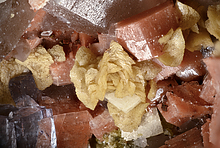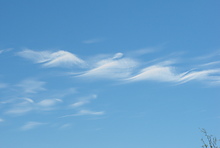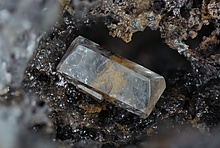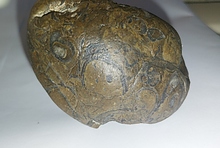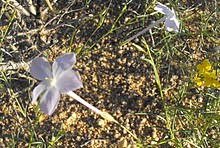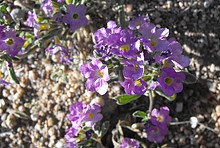Learning CenterWhat is a mineral?The most common minerals on earthInformation for EducatorsMindat ArticlesThe ElementsThe Rock H. Currier Digital LibraryGeologic Time
搜索矿物的性质搜索矿物的化学Advanced Locality Search随意显示任何一 种矿物Random Locality使用minID搜索邻近产地Search Articles搜索词汇表更多搜索选项
╳Discussions
💬 Home🔎 Search📅 LatestGroups
EducationOpen discussion area.Fakes & FraudsOpen discussion area.Field CollectingOpen discussion area.FossilsOpen discussion area.Gems and GemologyOpen discussion area.GeneralOpen discussion area.How to ContributeOpen discussion area.Identity HelpOpen discussion area.Improving Mindat.orgOpen discussion area.LocalitiesOpen discussion area.Lost and Stolen SpecimensOpen discussion area.MarketplaceOpen discussion area.MeteoritesOpen discussion area.Mindat ProductsOpen discussion area.Mineral ExchangesOpen discussion area.Mineral PhotographyOpen discussion area.Mineral ShowsOpen discussion area.Mineralogical ClassificationOpen discussion area.Mineralogy CourseOpen discussion area.MineralsOpen discussion area.Minerals and MuseumsOpen discussion area.PhotosOpen discussion area.Techniques for CollectorsOpen discussion area.The Rock H. Currier Digital LibraryOpen discussion area.UV MineralsOpen discussion area.Recent Images in Discussions
Mineral PhotographyGetting better detail in photos

5th Dec 2009 23:48 UTCAnonymous User
Photo was taken at F14, 2 second timer so there are no vibrations, on a very stable tripod, shooting RAW and edited to slightly increase sharpness.
I am using an olympus e-520 10.1MP camera with 14-42mm lens.
Are there ways I can increase the amount of detail captured with my current set-up?
Thanks!
Philippe.
PS: Relatively new to this, so any tips will help!
6th Dec 2009 00:51 UTCJames Christopher
6th Dec 2009 01:00 UTCJames Christopher

6th Dec 2009 01:02 UTCAnonymous User
6th Dec 2009 02:30 UTCFred & Linda Elsnau
Good luck,
Linda
6th Dec 2009 02:37 UTCKeith Compton 🌟 Manager
I am not a photographer by any means, but I would simply go for a longer exposure at say F32 with a longer exposure time. There are apparently formulae for this - I just do it by trial and error on Manual settings - it not so much varying the focus - its getting the depth of field right. Remember if you are trying to photograph something that is say 20mm in depth from front to back then you need to set your camera to your maximum F stop and set your focus to around 8 - 10 mm from the front of the actual item you are photographing. Most of my pics are taken at around 4 to 6 seconds. You may need to get yourself a macro lens to get the best results, that way you get close up but be a little further away from the subject.
Good luck
Cheers
6th Dec 2009 02:59 UTCHenry Minot 🌟 Expert
Henry.

6th Dec 2009 03:00 UTCHoward Messing
With a relatively flat specimen like this, make sure the plane of the specimen matches the focal plane of the camera.
If your camera has a mirror lock-up function, that might help more than the timer (or use both features together).
As vibration free as this is, the longer the exposure the more "fuzz" will creep in...so cranking up the light and shortening the exposure might help.
You should also play with the focal length, usually the longer the focal length the better the focus...and if you have a fixed focal length lens they generally are much sharper than zooms.
An article that covers just about everything you might want to know on this subject: "Fixing unsharp images"
6th Dec 2009 03:05 UTCHenry Minot 🌟 Expert

6th Dec 2009 15:32 UTCAnonymous User
I have tried tented lighting, but the tent is too small for me to fit the lamps and specimen is (may have to build one).
I've started reading the articles, and already see several ways that could improve the pics! Thank you, Howard, for the great links.
7th Dec 2009 18:45 UTCJamey Swisher
I would use MLU(mirror lock up), a remote or timed shutter, and add more light, diffused of course.
For DOF calculations I suggest you use this tool until you get in your memory:
http://www.dofmaster.com/dofjs.html
In post processing(editing), I suggest a slight USM and/or local contrast enhancement. This is a typical workflow for RAW shooting. If have access to curves in your editing program try a simple S-Curve as well.
7th Dec 2009 19:20 UTCTony Peterson Expert
Lose the stock lens you are using. Scrape up your pennies and buy the Zuiko 50 mm macro lens. It is a very fine tool. The stock lens is......less fine.
A good lens will come with a recommendation for what f stop it performs best at. There will be a tradeoff between aperture/sharpness and depth of field. The Zuiko 50 mm performs best at around f5.
As Jamey has noted, if you want super shots, you will need to use CombineZ most of the time although for that specimen, which is fairly flat, a single frame is probably best. CombineZ gives very good focus but it adversely affects dynamic range and color.
And that is my only criticism of your photo.....the dynamic range in the areas of interest is too narrow. The way to improve it is to expand the range of light/dark, not get better focus. To do this, you will need softer (=less directional) lighting, else you will be held prisoner to the harsh highlights and near-black shadows you have here. I have a description of my own setup on my profile page; I don't necessarily put it up as a model, but it may give you ideas. Need not be expensive, either.
happy clicking,
Tony
8th Dec 2009 00:06 UTCDr. Paul Bordovsky
I'll echo what Tony said. The 14-42 kit lens is a bit soft. And F-14 is stopped down too much. The sharpest setting
is usually a couple of stops above wide open. Makes sense, since this lets more light onto the sensor. I'm always reminded of this when I forget my reading glasses. In order to be able to read the newspaper, I have to sit next to a window to get enough light.
The Zuiko 50mm F-2 macro is a great lens. Very sharp throughout its range. While the depth of field is narrow when using more open apertures, you can offset this by moving the camera back a little, and crop your image.
Paul

12th Dec 2009 00:52 UTCAnonymous User
17th Dec 2009 01:41 UTCJamey Swisher

17th Mar 2010 12:06 UTCZbynek Burival Expert
Im Olympus man so I think I could give you more precise answer then folks using other gear. From my own tests, the 14-42 is very good lens and likely the best kit lens on the market (while Sony and Canon are real cr*p btw.). However still keep in mind that despite its pretty good lens and has decent macro ability, its not really superb one. Tha tele-kit lens 40-150 is far better and even on f4,0 really sharp, from what Ive seen on my results I would say it has incredible optics very close to 50-200 SWD (I own both). If you have it, then better use 40-150 for mineral photos, its significantly sharper.
Do not go over f9,0 if you need maximum sharpness, at f11,0 the result is aprox the same as with fully open lens and f16,0 is MUCH worse then that. Oly has a crop factor 2x - that means it has larger dof then APS-C/DX and significantly larger then fullframes - this is big advantage for closeups! However it also suffers more from diffraction effects, so while f16,0 is fine on fullframe or maybe some APS-C/DX, I suggest not going over f9,0 - i did serious testing of 14-54/2,8-3,5 + 40-150/4,0-5,6 + 50-200/2,8-3,5 SWD and ALL do show drop of sharpness at f11,0 and above. In fact 50-200 is most sharp and despite that at f16,0 it is more soft then with f2,8! The highest aperture was maybe correct on film but its not with digital. Remember you still can do same dof at f8,0 as with fullframe at f16,0 - that often means you can shoot handheld with Oly instead of tripod with fullframe.
You can tweak the factory settings - maybe its sounds strange but if you set sharpness to -1 or -2 and noise reduction to -1 or off, the pictures will be more sharp. extensive reading on settings tweaks and which combination works best please visit http://wrotniak.net/photo/43/e510-fs.html (that also applies to E-520). The noise will go up abit, but you can completely remove all noise up to iso200 very easily with eg neatImage or shoot raw and use denoise filters eg in Camera raw by Adobe (if you turn chroma noise to 25-35% and luminance noise to 50-70% almost all noise will be removed without any really visible effect on sharpness up to iso400).
Also when you work with your pictures, you need to sharpen them before resampling for smaller ones. And then usually sharpen them once again.
About lenses - nearly all recommend ZD 50/2,0 - well, its really impressive piece. I found it slow focusing and noisy and that 5-10% of extra optical power over my 50-200 SWD was not enough for me to buy it. Put this aside, its superb macro lens, but many folks do forgot about much cheaper and very good ZD 35/3,5.
I do use for real macro shots old lenses with M42 screw mount + reduction. They work only with manual focus and aperture, but while shooting from tripod its fine and they provide unbeliavable optics for few bucks (check ebay). I do have Carl Zeiss Jena 35/2,4 + SMC Takumar 50/1,4 + Jupiter 85/2,0 + Pentacon 135/2,8 - mind you these are cream of the M42 widely available stuff. Almost all 50/1,8 or 50/1,4 lenses on M42 are very good - remember to multiply the focal length 2x! You can also buy bellows for few bucks for M42.
Keep in mind that eg. Carl Zeiss 35/2,4 (focusing from 18cm, my favourite lens for mineral macro shots) + M42 to 4/3 reduction + M42 bellows/macro rings still costs you less then just original ZD EX-25 macro ring. Beware that only EX-25 works properly with modern Zuiko Digital lenses - ZDs have NO aperture ring and they have fly-by-wire manual focus - that means they work ONLY with all electronics connected to body, if you use those cheap macro rings for 4/3 chinese folks sell on ebay, it will not work - you will not be able to focus and set aperture.
For better dof/sharpness you can also use stacking SW like CombineZ or Helicon. To increase dynamic range (no dark shadows and blown out highlights) works great HDR (High Dynamic Range) photography. Both topics are not easy to explain in few words, please check online sources. From my experience HDR also increase sharpness abit and decrease noise (if done properly), thats because of advanced image processing and better contrast.

17th Mar 2010 17:30 UTCAnonymous User
One can see my images and lighting techniques in a few post below this one..

15th Apr 2010 06:08 UTCFred A. Schuster
Maybe if you open the aperture for less exposure time. I don't know what yur subject is, but if you can take 3 shots using a narrow field of focus, there are stacking programs on the internet. This frees you from having to use a smaller aperture, and get the deep of focus.
Fred Schuster




版权所有© mindat.org1993年至2024年,除了规定的地方。 Mindat.org全赖于全球数千个以上成员和支持者们的参与。
隐私政策 - 条款和条款细则 - 联络我们 - Report a bug/vulnerability Current server date and time: 2024.4.18 23:06:46
隐私政策 - 条款和条款细则 - 联络我们 - Report a bug/vulnerability Current server date and time: 2024.4.18 23:06:46

